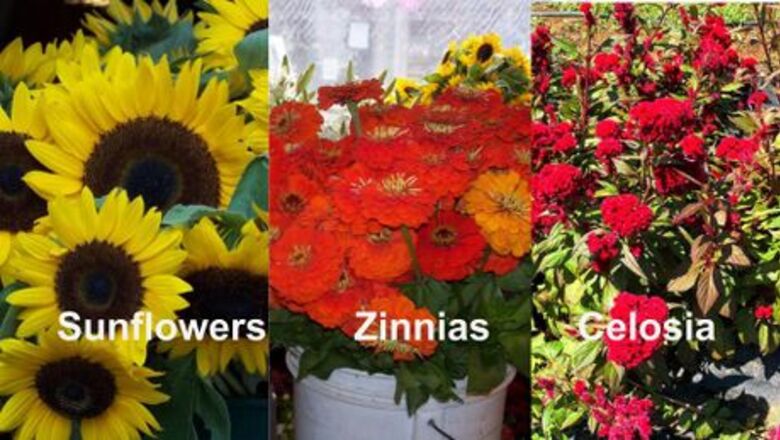
views
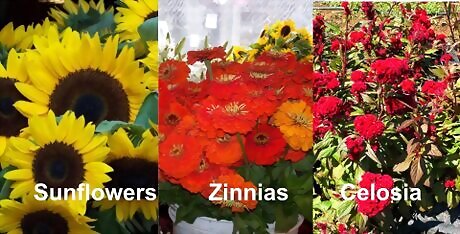
Choose "simple-to-grow" cut flowers. Select sunflowers, zinnias and celosia in the first year or two. The seed of these cut flowers can be sown directly in the garden soil and perform great. These flowers are in high demand and last a week or more for your customers. This is a great way to determine if you really want to do the work necessary for this business. Seed of these plants is available at most garden stores. However, the best varieties, i.e., pollenless sunflowers, etc., are available only from companies that sell "cut flower" varieties. Search for them online.
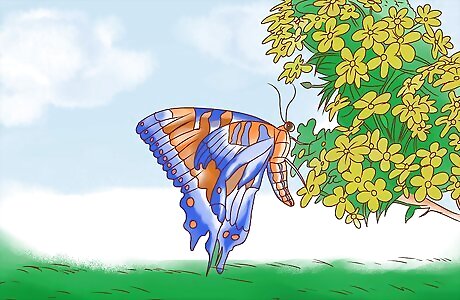
Choose the location in your yard or farm for your garden. It should receive full sun for at least 8 hours a day and water should drain well from the site. The garden should be at least 10' x 20' (200 sq. ft.) or 3 x 7 m (20 sq. m). This is large enough to practice the techniques for growing cut flowers and you may make some profit. Use a larger size if you are really committed to growing cut flowers for sale. The garden should have easy access to water for irrigation. A hose and lawn sprinkler will be adequate in the first year. If the garden is expanded for more flowers in the future, install drip irrigation for more efficient water use.
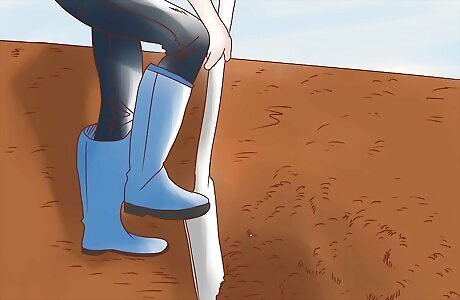
Loosen or till the soil. Spade and turn the soil by hand or use a rototiller machine to work the soil. Ideally, this is completed in the fall before the following summer's growing season. Add organic matter - compost, leaves, grass clippings, dried & aged cow manure, etc. - to improve your soil. Lawn grass can be killed with chemicals, if you choose, to allow a quicker planting schedule for your cut flowers.
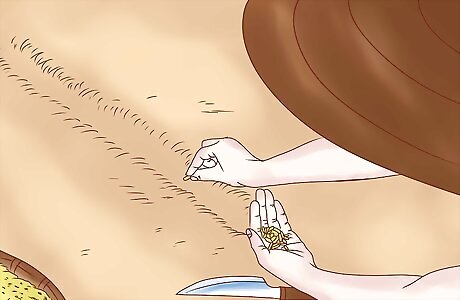
Make a seedbed for the cut flower seeds. The garden soil should be leveled uniformly with a rake and hoe. Large seeds like sunflowers and zinnias can be pressed into the tilled soil in rows and covered with soil to level the surface. Seeds should be 4 inches (10 cm) apart in rows. Use a trowel or hoe to make a slight depression in the soil by moving soil to one side of the row. Scatter the small seeds of celosia in the depression and cover with the soil that was removed. Seeds should be 2-3 inches (5-7 cm) apart. Use rows for the cut flower plants so it is easy to use a hoe to remove weeds when the cut flower seedlings are young. Water the garden thoroughly after the seed are sown. Water lightly every day until the first seedlings emerge, then water as needed.
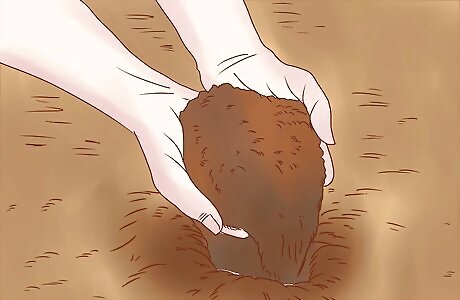
Apply mulch to the garden after seedlings have germinated. Mulch is important to conserve water in the garden and to reduce competition from weedy plants. Applications of organic mulch will help improve your soil, conserve water and reduce weeds. Good quality compost would be the first choice. Second choice, grass clippings from the lawn; as long as no weed killers have been applied to the lawn. Third choice, commercial landscape mulch from shredded bark or wood. Landscape fabrics work well as mulch. They are easy to apply and last for a number of years.
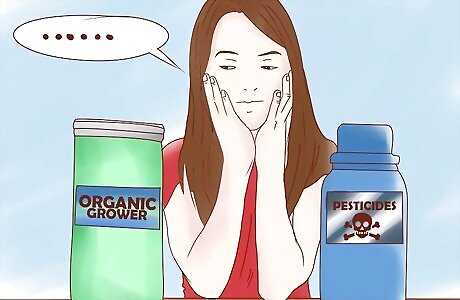
Consider the relationship of the wildlife in your location with your flower garden. Most flower gardeners use chemicals only as a last resort. Growing organically will support your local wildlife, ie. bees, butterflies, and birds, all of which are important for maintaining a healthy ecosystem and support pollinators. Living organisms in your location can impact your cut flower business - large animals, small animals, insects, invasive weedy plants (native and exotic), plant diseases in the soil and plant diseases in the air. Use fences to exclude pest animals. Animals - deer, cattle, racoons, dogs, etc. - can do significant damage to a flower garden. Insect pests will be an issue for the flowers. Timely harvest practices usually reduce the problems and chemical use. Invasive plants, weeds, may be a significant problem. Mulch and hand pulling usually reduce problems and chemical use. Natural soil-based plant diseases will usually be minimal in the first years, unless this garden area has been used recently for other crops. Rainfall, humidity and temperatures will influence airborne plant diseases. Chemical use can reduce costs and save time and labor, if you choose to use them. Determine the importance of an "organic" label to your customers.

Apply fertilizer regularly. These plants must grow well to produce the flowers you wish to sell. Apply fertilizer every 2-3 weeks throughout the growing season; use the manufacturers recommendations. Conventional (chemical) and organic fertilizers work equally well in garden soil. Nutrients in conventional fertilizers dissolve and are absorbed by the cut flower plants. Nutrients from organic fertilizers have to be processed by soil microbes before they are available to the plants. Organic fertilizers are slower but equally good for the plants and generally better for the soil ecosystem.
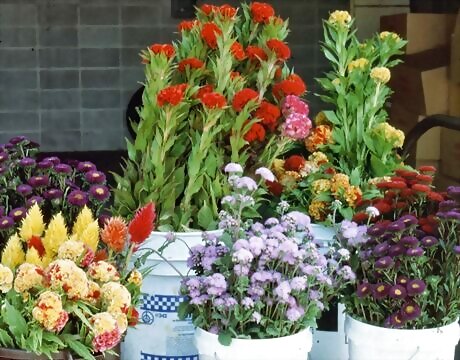
Harvest flowers the first thing in the morning. The cut flowers will last longer when harvested during cooler temperatures and when they are full hydrated. Place cut stems into fresh water immediately after they have been cut. Harvest all flowers, good and bad, as you go through the row. New flowers will grow where flowers were harvested as the plants keep growing. Plus, the harvest of poor flowers will reduce insect and disease problems. Use clean buckets for the flowers every time. Buckets should be washed with soap and water after every use; ideally use a disinfectant. Dirty buckets will have bacteria that will clog the stems and reduce water uptake. Place the flowers and buckets in a shady cool place as soon as possible.

Grade the flowers. Separate and discard the poor flowers. Judge your harvest. Determine what bouquets will be made today. Make the bouquets and place them in a cool location. Distribute the bouquets to your customers.

Find customers to buy your flowers. In the first years, your customers will be your friends, neighbors, colleagues at work and their friends and neighbors. Develop a social media network of your contacts. Post photos of flowers available today and tomorrow, let them contact you for pickup or how to meet for delivery and payment. Since your income won't be very high in the beginning, consider a roadside stand, a booth at a flea market, a farmers' market or community tag sale. Be sure to visit public markets to see cut flower prices, types of bouquets and containers used to sell bouquets. If you live on a road where you get enough traffic to have the stand in your yard, consider leaving a few products out all the time, with an 'honors system' can for payment. Be sure to empty the can regularly, while most people are honest - some are not.Grow Your Own Flowers and Sell Them Step 9Bullet2.jpg
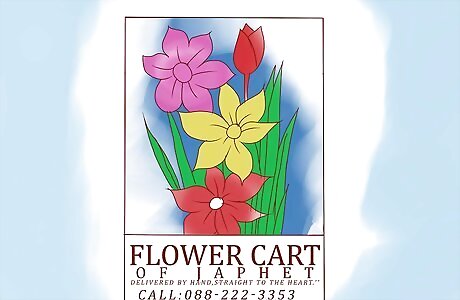
Next, advertise! Take pictures of your products and create posters to decorate your booth.Grow Your Own Flowers and Sell Them Step 10Bullet1.jpg Put signs at intersections near your home. Don't hang them on poles, and be sure they don't create a line-of-sight hazard. (Signs that do this are often removed, and you could get cited by the authorities for creating a hazard).Grow Your Own Flowers and Sell Them Step 10Bullet2.jpg










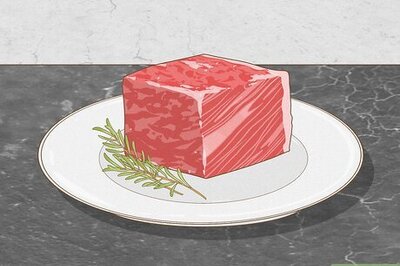



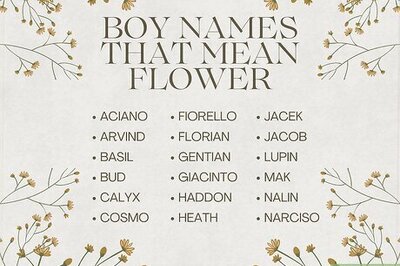





Comments
0 comment